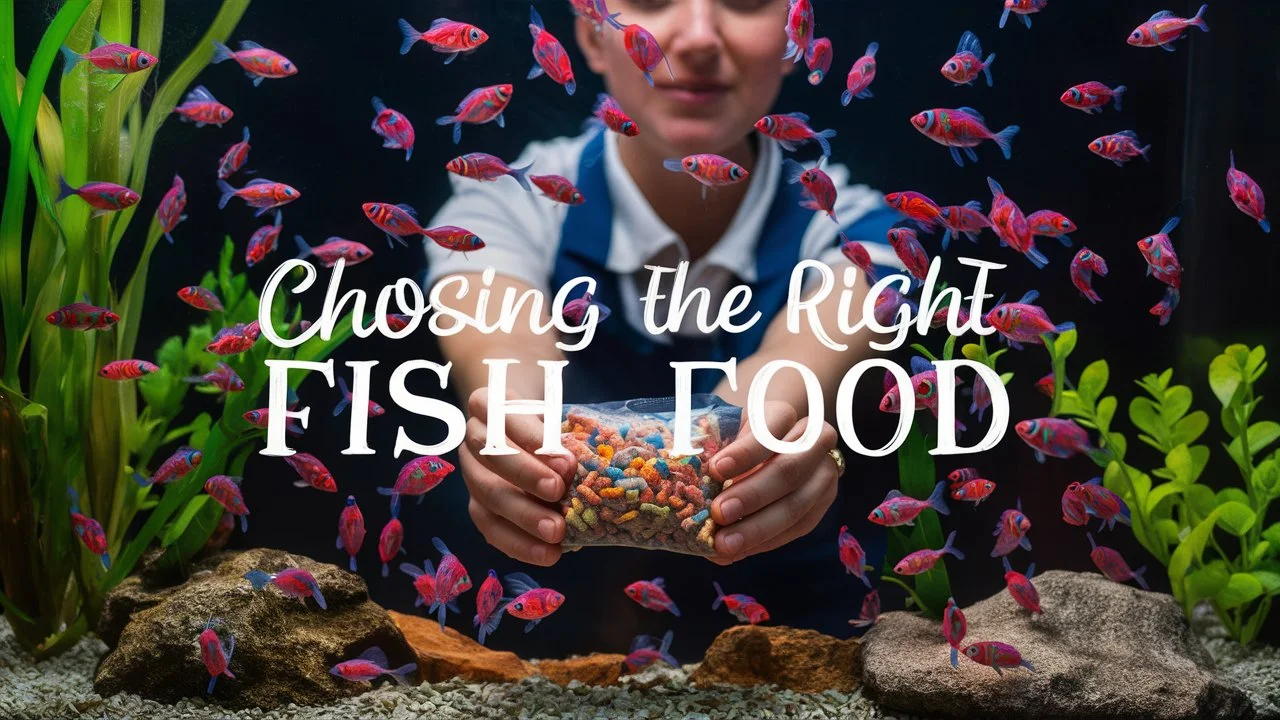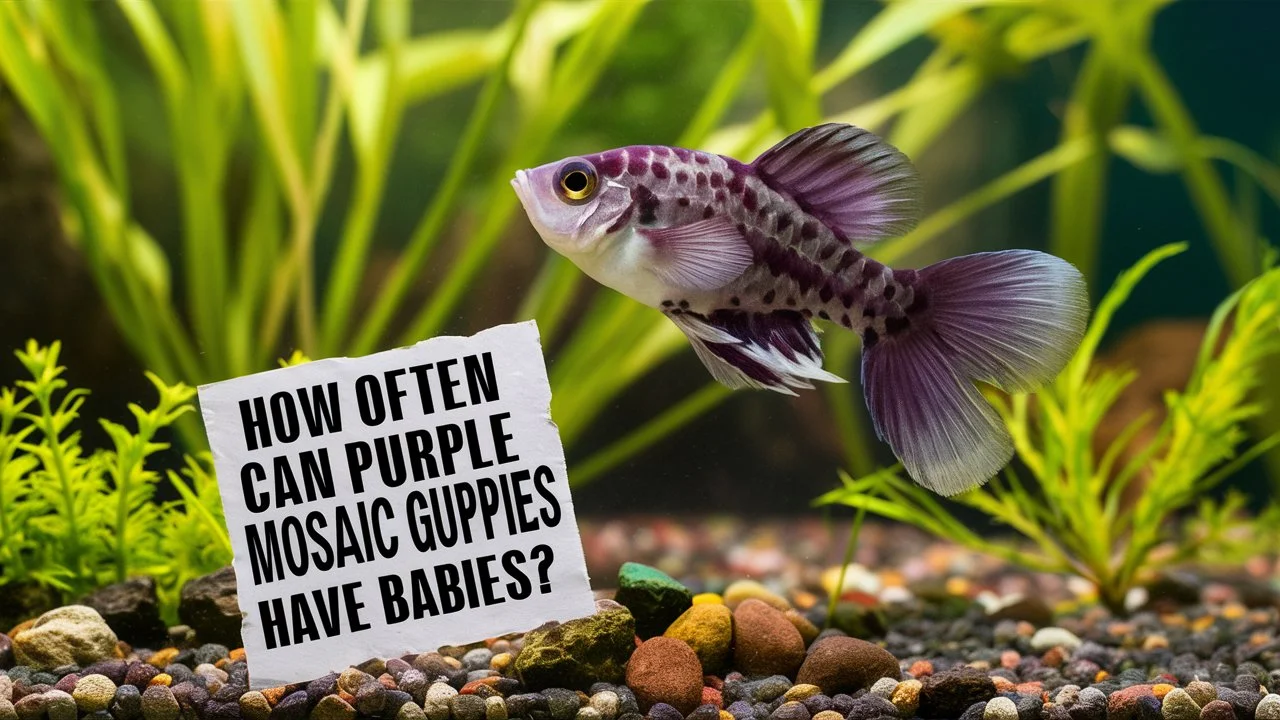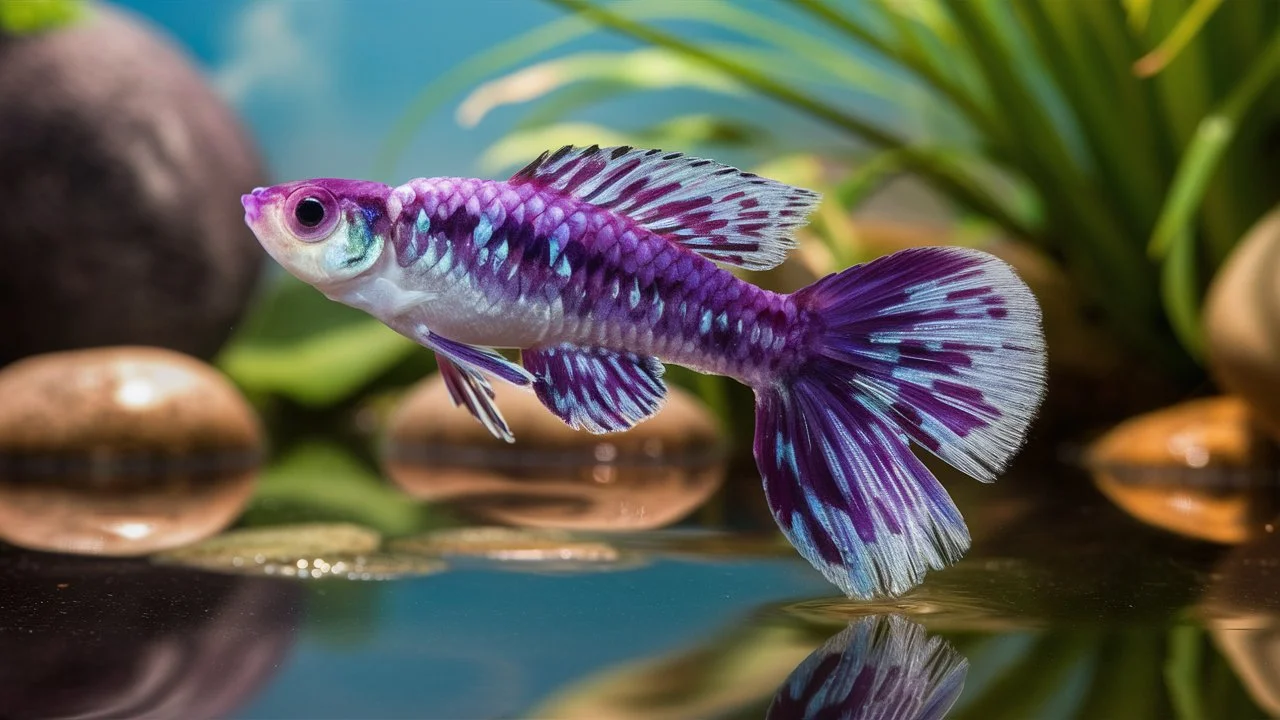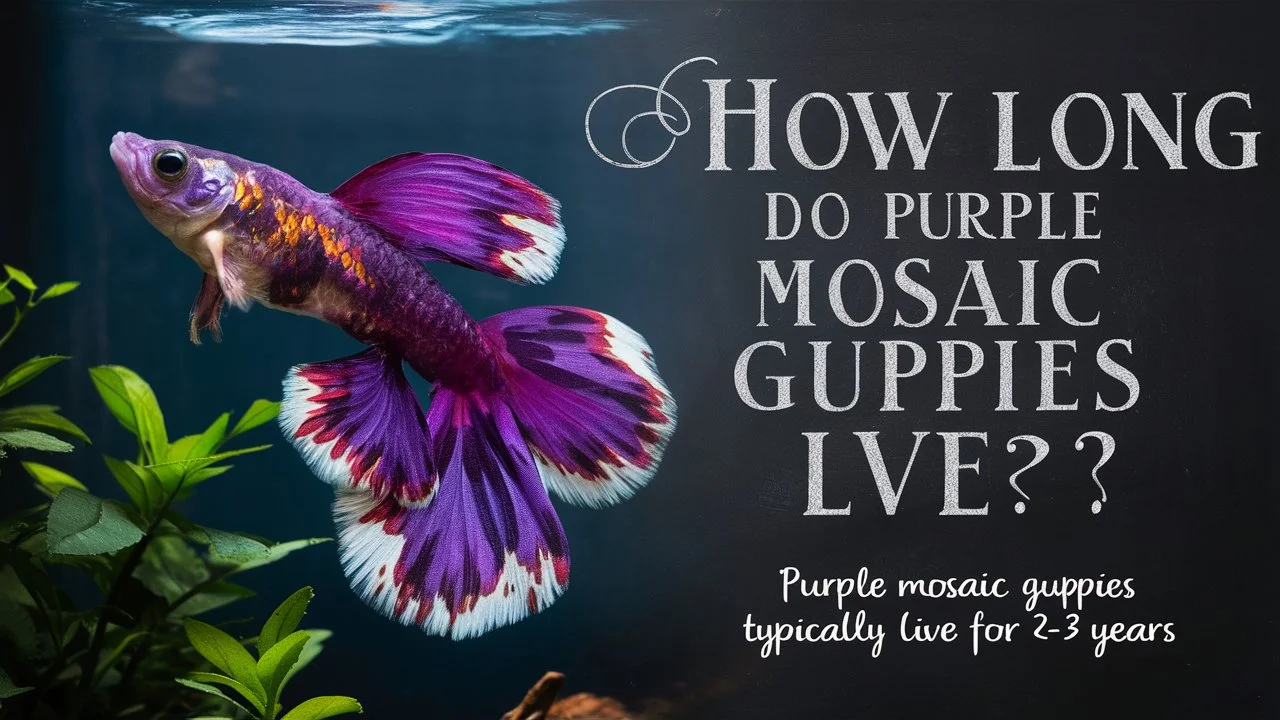The Purple Mosaic Guppy is a small and colorful fish that is popular among aquarium enthusiasts. It is known for its vibrant purple and blue patterns which make it stand out in any fish tank. These guppies are peaceful, making them great for community tanks with other friendly fish.
They are easy to care for, making them perfect for beginners. With their beautiful appearance and simple care needs, Purple Mosaic Guppies are a wonderful addition to any aquarium.
Purple Mosaic Guppies cost between $3 and $10. They live for 2 to 3 years and eat fish flakes, pellets and sometimes live or frozen foods like brine shrimp. Breeding is easy as they give birth to live young. Keep the water clean and at 74-82°F (23-28°C). Watch for common fish diseases and treat them quickly.
Choosing the Right Fish Food for Purple Mosaic Guppies
Feeding your Purple Mosaic Guppies the right food is essential for their health, growth and vibrant colors. Here’s a guide to help you choose the best food for them.

Types of Fish Food
- Flake Food
- Description: Flake food is a staple for many aquarium fish and is easily available.
- Benefits: It provides a balanced diet and is easy to store and feed.
- Tip: Choose high-quality flake food specifically designed for tropical fish.
- Pellets
- Description: Pellets sink slowly, making them a good option for guppies.
- Benefits: They are nutrient-dense and less likely to pollute the water compared to flakes.
- Tip: Ensure the pellets are small enough for guppies to eat comfortably.
- Live Foods
- Types: Brine shrimp, daphnia, and mosquito larvae.
- Benefits: Live foods are rich in protein and stimulate natural hunting behavior.
- Tip: Offer live foods as occasional treats to provide variety and boost their protein intake.
- Frozen Foods
- Types: Frozen brine shrimp, bloodworms and mysis shrimp.
- Benefits: Frozen foods are convenient and retain most of the nutrients found in live foods.
- Tip: Thaw the frozen food before feeding and use it as a supplement to their regular diet.
- Vegetable-Based Foods
- Description: Some flakes and pellets are formulated with vegetable matter.
- Benefits: Guppies benefit from a varied diet that includes plant-based nutrients.
- Tip: Occasionally add blanched spinach or peas to their diet for additional fiber.
Feeding Tips
- Frequency and Amount
- Feed your Purple Mosaic Guppies small amounts 2-3 times a day.
- Only give them what they can eat within 2-3 minutes to avoid overfeeding and water pollution.
- Diet Variety
- Switch between different types of food to maintain a balanced diet.
- This helps prevent nutritional deficiencies and keeps your guppies interested in their food.
- Supplements
- Consider adding vitamins and supplements if you feel the diet lacks certain nutrients.
- Some fish foods are fortified with vitamins to promote overall health and vibrant colors.
- Observation
- Watch your guppies while they eat to ensure they are consuming the food properly.
- Adjust the type and amount of food based on their eating habits and health.
By choosing the right fish food and feeding them properly, you can ensure your Purple Mosaic Guppies stay healthy, active and colorful. A varied and balanced diet will enhance their natural beauty and support their overall well-being.
How Often Can Purple Mosaic Guppies Have Babies?
Purple Mosaic Guppies can have babies every 4 to 6 weeks. A female guppy is pregnant for about 21 to 30 days and can give birth to 20 to 40 fry each time, sometimes even up to 100. They start breeding at around 3 months old and can continue to have babies regularly.

Pregnancy Duration
A female guppy is pregnant for about 21 to 30 days. After this period, she will give birth to live babies instead of laying eggs.
Number of Babies
Each time a female guppy gives birth, she can have between 20 and 40 fry. Sometimes, she might have even more, up to 100 fry at once.
When They Start Breeding
Female guppies can start having babies when they are about 3 months old. They continue to breed regularly throughout their lives.
Ideal Conditions for Breeding
To help your guppies breed successfully, make sure they have a good environment:
- Clean Water: Keep the tank clean by performing regular water changes.
- Good Food: Provide a balanced diet with fish flakes, pellets, and occasional live or frozen foods.
- Right Temperature: Keep the water temperature between 75-82°F (24-28°C).
Storing Sperm
Female guppies have a unique ability to store sperm from males. This means they can continue to have babies for several months even if there is no male in the tank. A single mating can result in multiple batches of fry.
By providing the right care and environment, your Purple Mosaic Guppies can have babies regularly, keeping your aquarium lively and full of colorful fish.
Common Health Issues and Treatment of Purple Mosaic Guppies
Purple Mosaic Guppies are beautiful and vibrant fish, but like all pets, they can face health issues. Here’s a guide to understanding common health problems and how to treat them.
Fin Rot
Symptoms:
- Torn or ragged fins
- Discolored or frayed edges on fins
Treatment:
- Keep the water clean with regular changes.
- Use aquarium salt or medications designed for fin rot.
- Ensure the water temperature is stable.
Ich (White Spot Disease)
Symptoms:
- Small white spots on the body and fins
- Rubbing against objects in the tank
- Rapid breathing
Treatment:
- Raise the water temperature slightly to about 82-86°F (28-30°C) to speed up the life cycle of the parasite.
- Use ich-specific medications available at pet stores.
- Keep the tank clean and perform regular water changes.
Swim Bladder Disease
Symptoms:
- Difficulty swimming
- Floating at the top or sinking to the bottom
- Unbalanced swimming
Treatment:
- Feed them peas (with the skin removed) to help clear any digestive blockages.
- Fast the fish for 24-48 hours to see if the condition improves.
- Ensure the water is clean and at the right temperature.
Fungal Infections
Symptoms:
- White cotton-like growths on the body or fins
- Lethargy
- Loss of appetite
Treatment:
- Use antifungal medications available at pet stores.
- Keep the water clean and perform regular water changes.
- Isolate the infected fish to prevent the spread to other tank mates.
Bacterial Infections
Symptoms:
- Red or inflamed areas on the body or fins
- Ulcers or open sores
- Cloudy eyes
Treatment:
- Use antibiotics specifically for aquarium fish.
- Maintain a clean and healthy tank environment.
- Monitor water quality regularly.
Preventing Health Issues
Good Tank Maintenance:
- Regularly change the water and clean the tank to remove waste and toxins.
- Use a good filtration system to keep the water clean.
Proper Diet:
- Feed a balanced diet with high-quality flakes, pellets, and occasional live or frozen foods.
- Avoid overfeeding to prevent water pollution.
Stable Environment:
- Maintain a stable water temperature between 74-82°F (23-28°C).
- Monitor water parameters like pH, ammonia, nitrites, and nitrates regularly.
By keeping a close eye on your Purple Mosaic Guppies and providing proper care, you can prevent many common health issues and ensure they live a healthy, vibrant life.
Conclusion
Purple Mosaic Guppies are a beautiful and vibrant addition to any aquarium. They are affordable, costing between $3 and $10 and they typically live for 2 to 3 years. To keep them healthy, feed them a balanced diet of fish flakes, pellets, and occasional live or frozen foods. Breeding them is easy with females giving birth every 4 to 6 weeks. Maintaining a clean tank and stable water conditions is crucial for their health. By providing proper care, your Purple Mosaic Guppies can thrive and brighten up your aquarium with their stunning colors.

